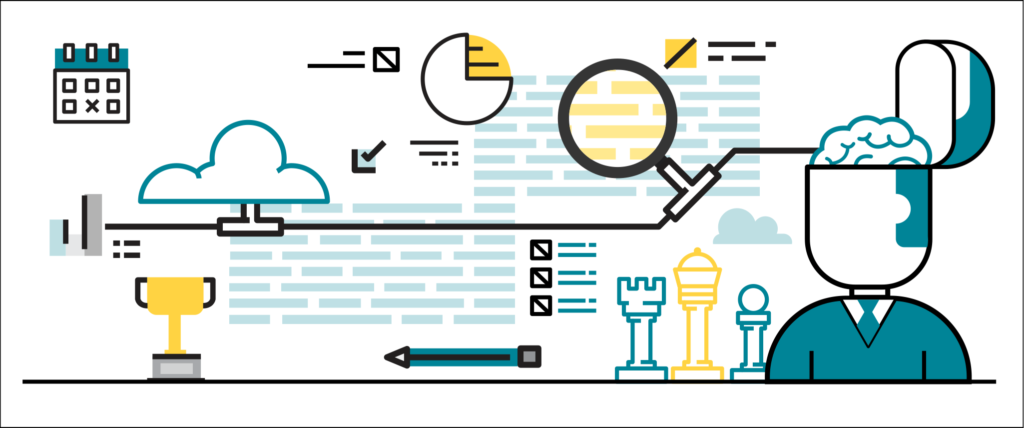Article
Using Google Analytics for Optimization

Getting the most out of your web analytics is hard. In many cases it becomes a time sink, while in others the process is simply ignored. Even when analytics are monitored, there seems to be the feeling the data is just not delivering on its potential, either from lack of understanding or lack of time to dig deeply enough to draw insights.
The good news is that, done properly, using Google Analytics for optimization needn’t require high levels of expertise nor large amounts of effort.
Optimization comes after your strategy, not before it
Jumping into data before you know what you are looking for is likely to be a fruitless endeavor. Turning your high-level goals into low-level metrics, on the other hand, will enable you to understand where to optimize.
There are a lot of analytics tools out there, each with their own pros and cons. At Fresh, we prefer to use Google Analytics. It isn’t perfect by any stretch; however, Google Analytics is widely adopted, easy to implement, and has a lot of depth of functionality. Though, the platform you choose is not nearly as important as understanding exactly what your business needs to measure.
Google Analytics can equally fascinate and overwhelm. The UI is complex with dozens of features buried in submenus with little or no guidance about what data is actually important for your business. The endless ability to slice and dice data, to compare behavior over different time frames, to witness trends appearing across demographics and device types leads the unprepared user into a bottomless time sink. These sessions can be fascinating but futile.
The key to getting more out of your analytics platform is knowing what to look for before you jump in. Determining up-front, clearly, and precisely what you want to measure will provide focus, direction, and ultimately lead to one of 3 results: the metric increased, decreased, or remained the same.
Getting to that metric, however, can be difficult for the uninitiated. It’s one thing to know that you will focus on industrial SMEs in the midwest, it is another to know exactly what to measure to understand whether your tactics are working. The key is working from your goals (e.g. more qualified leads), through to an explanatory behavioral model (e.g. qualified visitors are more likely to get in touch if they know more about our value proposition), and finally to a specific measurement (e.g. page views or duration on site which correlate to engagement). DTelepathy’s HEART framework is a simple tool for boiling down that complexity into a handful of key metrics.
Optimization is a continual process, not an annual event
When attempting to grind out insights, it’s all too easy to view analysis as a spring cleaning exercise: something you roll up your sleeves for and blast right through. For example, your team might “deep dive” into your analytics platform and pull out fascinating nuggets of information ahead of your annual planning sessions.
If this sounds familiar, you’re probably doing it wrong. It is possible to get groundbreaking insight from web data, but the strength of a web analytics platform is really in its use as a tactical reconnaissance tool. Firstly, the nature of online behavior is only an opaque indicator of user motivation and therefore shouldn’t be driving your core strategic decision making. Secondly, web analytics data is fast, cheap, and accurate about very specific things. The more frequently and effectively you use it, the more agile your company will be in the digital market.
Instead of an annual or seasonal effort, consider a weekly tactical review to determine which campaigns should be allocated advertising budget, where to focus on improving your site or application, and which products to promote. Imagine if, first thing every Monday morning, you could make an accurate snap decision for your team to get behind. This is entirely possible with web analytics; never before have marketing teams been closer to the data they need to make the right decisions. Of course, this scenario is only realistic when objectives are understood and actively measured against on a regular basis. If an analytics-based tactical review does not become a staple of the company’s operational culture, it’s too easy to allow newly adopted good habits to lapse and fall out of a rhythm.
Optimization needn’t be difficult: implement a configuration strategy
The objection to a smooth, rapid fire, weekly tactical meeting that produces confident and accurate decisions is that drawing insight takes time. Pulling up metrics, applying filters, and interpreting the data is time consuming. The good news is that this kind of manual effort is entirely unnecessary.
The key to an effective optimization process using Google Analytics is understanding what you need and configuring your platform to deliver the exact measurement you want. The default settings of Google Analytics and similar platforms tend to force you into the weeds, looking at granular levels of data where it can be hard to spot trends that lead to great tactical decisions. Down at this level everything looks interesting and it’s easy to become incapacitated by indecision.
The problem is that there is too much noise and not enough signal. In order to get to the signal you must strip out the noise, isolate cases, and group similar things together. Google Analytics is a Swiss Army Knife. Developing a configuration strategy is akin to removing all the blades and devices, leaving only the one or two tools that do exactly what you need. To draw insight you must then view this purer, rarified data in the right way and within the right context.
Google Analytics has a number of configuration tools to help:
- “Filters” to clean your data, stripping out noise from your own team or bots
- “Properties” to record data from differing experiences in different places
- “Views” to isolate markets, access points (devices), and subsections of your site or app
- “Groups” to bundle similar content or traffic sources together to make trends easier to spot
- “Goals” to track key visitor events and assign dollar values to outcomes
Furthermore, you can hardcode your reports to display data in a way that directly answers your unique questions. For example:
Question: Where should I apply my ad budget for London this week?
Data visualization: For London only, total goal values for each of your current campaigns
Question: Which content should we produce more of?
Data visualization: Pageviews per content group
Once the platform has been configured and reports set up, that Monday morning tactical meeting becomes easier and more effective when decisions are as easy as a click and quick glance. The key is putting in the upfront effort so that you don’t have to work for insight down the line.
Conclusion
Optimizing your online performance can appear difficult and all too easy to leave to “experts.” But small, frequent, and effective decisions taken over a duration can add up to big outcomes for your business. The key is in configuring your platform like a well-honed tool with just a few simple steps:
- Understand what needs to be achieved, how it will be achieved, and how progress can be measured.
- Configure your platform to cut out the noise and deliver signal for key markets and key tactical decisions.
- Make analytics-based decisions a consistent feature of your tactical decision-making process.









